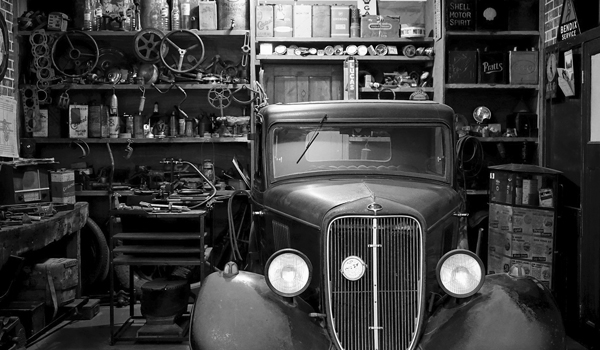
When people ask for advice on how to begin their journey toward minimalism, I always offer the same approach: move through the rooms in your home easiest to hardest, starting with the most lived-in spaces. That approach forms the foundation for the Uncluttered Course and my new book, The Minimalist Home.
After completing the first spaces in a home, anybody who has lived in their home for more than a few years can attest that there usually exists at least one large, overwhelming space that needs to be decluttered of possessions no longer needed. Think: basement, attic, garage, or storage shed.
These larger, more overwhelming spaces can present unique challenges. But countless people have found victory over them, and so can you.
Here is the best formula for decluttering large, overwhelming spaces:
1. Remove the easiest things first.
Scan the entire area and fill several bags/boxes of items you can get rid of quickly and easily. No difficult decisions at this point, just grab the low-hanging fruit. Don’t even bother opening boxes. You’re looking for quick, easy decisions at this point. Grab the things already in plain view that you know you don’t want anymore.
2. Discard larger items next.
Look for big items that take up lots of physical space, remove them next. Things such as cardboard boxes, furniture, large tools, anything that stores awkward. I realize sometimes these larger items can be more difficult to dispose of, but starting here is important. By removing the largest items at the very beginning, you will see quick progress in decluttering the space. This visible victory of cleared spaces will provide motivation as you continue.
3. Donate items instead of selling them.
If you don’t desperately need the money, you should always donate to a local charity whose mission you believe in. The only exceptions are valuable items or large items you are unable to transport yourself. Following this rule is particularly important in large spaces that are going to be time-consuming, don’t add to the burden by trying to resell everything.
4. Break your large space into smaller bite-size challenges.
After removing the easy and large items, you will begin the process of working methodically through your space. Use natural physical boundaries to break your project into smaller pieces: one shelf, one drawer, one side of the room, or even one box at a time. Don’t think about the whole project at once. Just start with one small area.
5. Work until your bite-size piece is completed.
Almost certainly you will not complete this large space in one day—especially if you have years of items. But you can still feel a sense of accomplishment by completing a smaller-sized challenge each time (a shelf, a drawer, etc.) as outlined in the previous step. See each smaller chunk all the way to completion before taking a break or quitting for the day. There is joy to be found in completing these smaller goals.
6. Physically touch each item and sort into keep, remove, or relocate.
It’s important to touch each item in a space when decluttering because the action forces a decision. Work hard to put as many things as possible into the “remove” pile. You need much less than you think you need. If an item has sat untouched for years in your attic, there is very little chance you will need it in the future.
7. Organize what’s left.
Don’t stop decluttering until your space looks spacious and manageable. When you’re done, neatly organize the remaining things so the space stays clean, manageable, and useful.
Large, cluttered spaces take focused effort and time. But you can do it. You’ll be glad you did.
from Becoming Minimalist https://ift.tt/2Mo8E8q
Aucun commentaire:
Enregistrer un commentaire